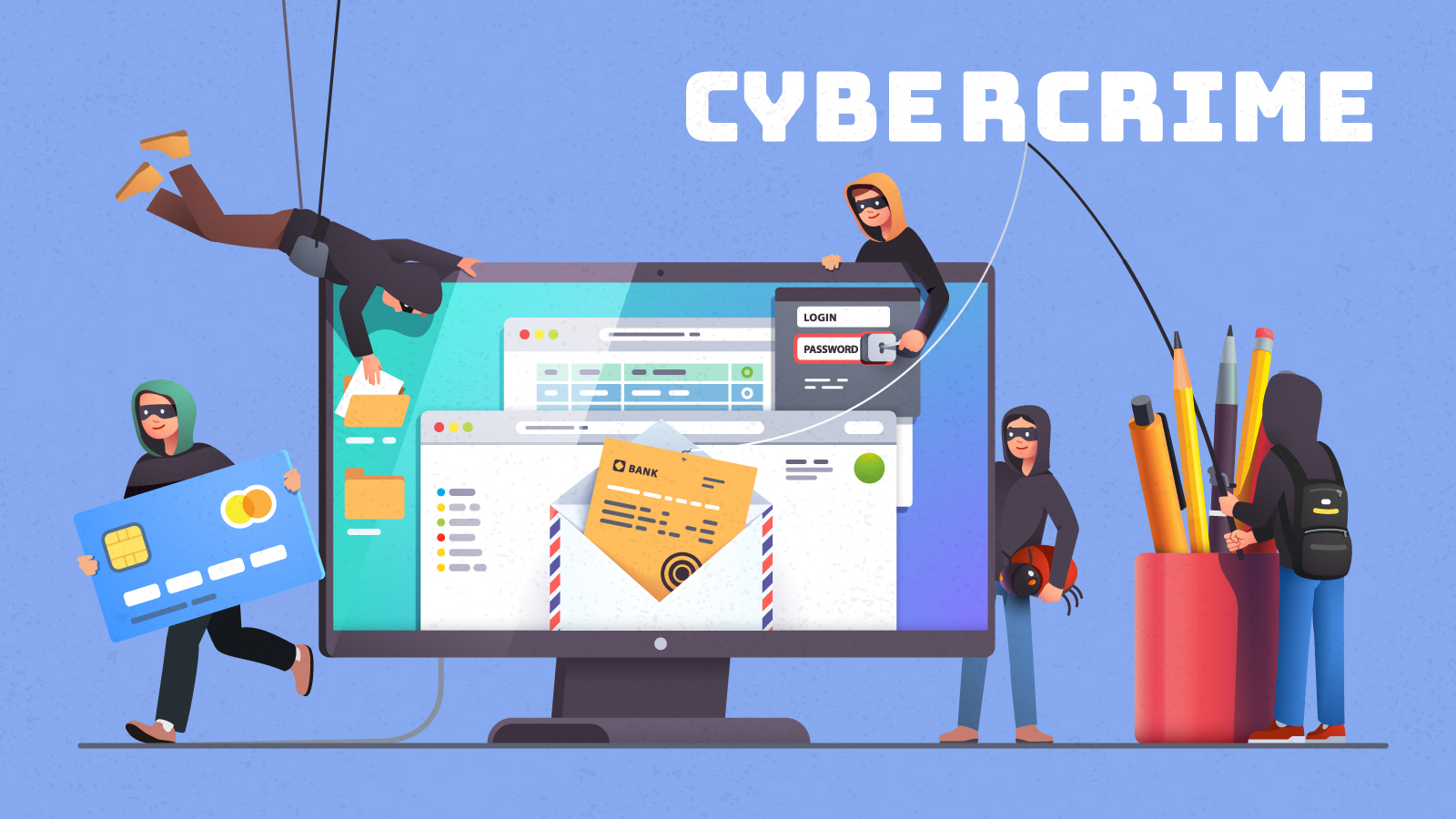Cybercrime During Pandemic: Protect Your Business Now
Cybercrime during the pandemic has surged as opportunistic hackers exploit the vulnerabilities that arise when businesses shift to remote operations. With employees working from home, many companies face heightened cybersecurity risks, making it essential for organizations to prioritize cybersecurity for businesses. Phishing attacks and social engineering tactics have become prevalent, targeting individuals who may be distracted or overwhelmed by the ongoing health crisis. As a result, employee training on cybersecurity is critical to help staff recognize potential threats and secure sensitive information. By addressing home office cyber risks, businesses can fortify their defenses against this rising tide of cybercrime.
The rise of digital threats during the global health crisis highlights the urgent need for robust cybersecurity measures. As companies embrace remote work to ensure employee safety, they inadvertently expose themselves to numerous online dangers. Malicious actors are employing increasingly sophisticated tactics to deceive employees, including deceptive emails and social manipulation techniques. Understanding the landscape of online crime is vital for organizations to develop effective strategies to protect their data and networks. By implementing comprehensive training and security protocols, businesses can better navigate the complexities of maintaining cybersecurity in a remote work environment.
Understanding Cybercrime During the Pandemic
The COVID-19 pandemic has reshaped the landscape of cybercrime, presenting new challenges for businesses. As organizations shifted to remote work, hackers seized the moment, launching a wave of cyberattacks that exploited the chaos and confusion surrounding the global crisis. Opportunistic cybercriminals have targeted vulnerable employees working from home, often using tactics such as phishing attacks and social engineering to gain access to sensitive information and corporate networks. This surge in cybercrime has necessitated a stronger focus on cybersecurity for businesses, emphasizing the importance of training and preparedness.
Business owners must recognize that the pandemic has not only heightened the risks associated with cybercrime but has also changed the nature of these threats. Cybercriminals have become increasingly sophisticated, crafting emails and messages that appear legitimate, often masquerading as health organizations or trusted sources of information. As such, it is crucial for organizations to implement comprehensive cybersecurity strategies that include employee training on cybersecurity awareness, robust phishing detection measures, and strong safeguards like multi-factor authentication to protect against these evolving threats.
The Rise of Phishing Attacks
Phishing attacks have surged during the pandemic, as cybercriminals exploit fears and anxieties related to COVID-19. These deceptive tactics often involve sending emails that appear to be from reputable organizations, luring recipients into clicking malicious links or providing sensitive information. For instance, many phishing campaigns have impersonated health agencies, enticing users to download purportedly informative documents that instead install malware on their devices. This not only compromises individual security but also poses significant risks to corporate networks and sensitive data.
To combat the rise of phishing attacks, businesses must prioritize employee training on recognizing suspicious emails and messages. Regular workshops can empower employees to identify common signs of phishing attempts, such as poor grammar, urgent language, and unfamiliar sender addresses. Additionally, organizations should implement email filtering and verification systems to detect and quarantine potential phishing threats before they reach employees’ inboxes, thereby enhancing their overall cybersecurity posture.
Social Engineering: A Major Threat
Social engineering remains one of the most prevalent tactics used by cybercriminals, accounting for a staggering 98 percent of cyberattacks. During the pandemic, these tactics have become even more pronounced, as hackers manipulate the emotions of individuals facing uncertainty and fear. By creating a sense of urgency or appealing to empathy, cybercriminals can trick employees into giving up sensitive information or granting unauthorized access to company networks. Understanding the psychological underpinnings of social engineering is essential for organizations to defend against these manipulative tactics.
To mitigate the risks associated with social engineering, companies should provide ongoing education and training for their employees. This training should cover various forms of social engineering, including phishing, pretexting, and baiting, and how to respond when they encounter suspicious interactions. Furthermore, fostering a culture of cybersecurity awareness within the organization can empower employees to speak up about potential threats and encourage them to verify requests for sensitive information before acting.
Home Office Cyber Risks
As many businesses transitioned to remote work during the pandemic, new cyber risks emerged that organizations may not have previously considered. Employees working from home often lack the robust security measures found in a traditional office setting, making them prime targets for cybercriminals. Without adequate protection, such as Virtual Private Networks (VPNs) and secure Wi-Fi connections, sensitive company information is at risk of exposure, leading to potential breaches and significant financial losses.
To address home office cyber risks, businesses should equip their employees with the necessary tools and knowledge to work securely from home. This includes implementing VPNs for secure network access, encouraging the use of strong, unique passwords for home Wi-Fi, and providing guidance on avoiding unsecured public networks. Additionally, organizations should conduct regular security assessments to identify vulnerabilities and enhance their cybersecurity measures in a remote work environment.
The Importance of Employee Training on Cybersecurity
Employee training on cybersecurity is a critical aspect of a company’s defense strategy against cybercrime, especially during a pandemic when remote work has become the norm. Educating employees about the various cyber threats they may encounter, such as phishing and social engineering, empowers them to recognize and respond appropriately to potential attacks. Comprehensive training programs can demystify cybersecurity concepts, making it easier for employees to understand their role in protecting company assets and data.
Moreover, ongoing training fosters a culture of cybersecurity awareness within the organization. Regular updates and refresher courses help keep employees informed about the latest threats and best practices, ensuring they remain vigilant against cybercrime. Additionally, businesses can benefit from simulated cyberattack exercises, which provide employees with the opportunity to practice their responses in a controlled environment, ultimately strengthening the overall security posture of the organization.
Keeping Cybersecurity Measures Up-to-Date
In the rapidly evolving landscape of cyber threats, it is vital for businesses to keep their cybersecurity measures up-to-date. This includes regularly updating software and systems to patch vulnerabilities that cybercriminals might exploit. During the pandemic, as organizations faced unprecedented challenges, many may have unintentionally neglected their cybersecurity protocols, leaving themselves exposed to attacks. A proactive approach to cybersecurity involves continuous monitoring and assessment of potential weaknesses within the organization.
Additionally, organizations should review their cybersecurity policies and incident response plans to ensure they reflect current threats and best practices. Engaging with cybersecurity experts or consultants can provide valuable insights into emerging threats and help businesses implement effective security measures. By staying informed and adaptable, companies can better protect themselves against cybercrime and safeguard their operations during uncertain times.
Evaluating Cyber Risk Coverage
As cyber threats continue to evolve, having adequate cyber risk coverage is paramount for businesses. This type of insurance can help mitigate the financial impact of a cyber incident, covering costs such as data recovery, legal fees, and notification expenses. Especially during the pandemic, when cybercrime rates have surged, organizations must evaluate their current coverage to ensure it meets their needs and adequately protects against potential risks.
Business owners should work closely with their insurance brokers to understand the specifics of their cyber risk coverage and identify any gaps. This may involve adjusting policy limits, exploring additional coverage options, or even investing in specialized cyber insurance tailored to their industry. By taking a proactive approach to cyber risk coverage, businesses can enhance their resilience against cyberattacks and ensure they are equipped to handle any incidents that may arise.
Creating a Culture of Cybersecurity
Creating a culture of cybersecurity within an organization is essential for effective risk management, particularly in a remote work environment. When employees understand the importance of cybersecurity and feel supported by their organization, they are more likely to adhere to best practices and report suspicious activities. Leadership plays a crucial role in fostering this culture, as their commitment to cybersecurity can influence employee attitudes and behaviors.
To cultivate a strong cybersecurity culture, organizations can implement regular training sessions, encourage open communication about security concerns, and recognize employees who demonstrate good cybersecurity practices. By promoting a culture of accountability and vigilance, businesses can empower their workforce to take an active role in protecting sensitive information and contribute to the overall security of the organization.
Responding to Cyber Incidents Effectively
In the event of a cyber incident, organizations must have a clear and effective response plan in place. This plan should outline the steps to take when a breach occurs, including identifying the source of the attack, containing the damage, and notifying affected parties. A well-structured incident response plan can minimize the impact of cyber incidents, allowing businesses to recover more quickly and efficiently.
Training employees on how to respond to potential cyber incidents is also vital. Regular drills and simulations can help employees become familiar with the response procedures, ensuring they know what to do in case of a real attack. Furthermore, post-incident reviews can provide valuable insights into what worked well and what needs improvement, allowing organizations to continually refine their cybersecurity strategies and enhance their resilience against future threats.
Frequently Asked Questions
What are the main types of cybercrime during the pandemic affecting businesses?
During the pandemic, businesses face several types of cybercrime, including phishing attacks, social engineering tactics, and malware exploitation. Cybercriminals take advantage of the increased reliance on digital communication and the heightened fear surrounding health issues, using these tactics to deceive employees into revealing sensitive information or downloading malicious software.
How can businesses improve cybersecurity for employees working from home during the pandemic?
To improve cybersecurity for employees working from home during the pandemic, businesses should implement Virtual Private Networks (VPNs) for secure access to their networks, enforce multi-factor authentication for email access, and provide training on creating strong passwords. Additionally, educating employees on recognizing phishing attacks and social engineering tactics is crucial to minimizing risks.
What role does employee training on cybersecurity play in preventing cybercrime during the pandemic?
Employee training on cybersecurity is vital in preventing cybercrime during the pandemic. As employees navigate unfamiliar work environments and face distractions, proper training helps them recognize phishing emails and social engineering attempts. Educating staff about the importance of secure practices, such as using VPNs and strong passwords, significantly reduces the risk of cyberattacks.
What are the cyber risks associated with remote work during the pandemic?
The cyber risks associated with remote work during the pandemic include increased exposure to phishing attacks, vulnerabilities in home networks, and the potential for employee errors. Without proper cybersecurity measures in place, employees may inadvertently compromise sensitive company data, making businesses more susceptible to cybercrime.
How can businesses mitigate phishing attacks during the pandemic?
To mitigate phishing attacks during the pandemic, businesses should implement robust email filtering systems, conduct regular cybersecurity training for employees, and encourage vigilance when opening emails or clicking links. Training should specifically address the tactics used in phishing attacks related to pandemic information, helping employees identify and report suspicious communications.
What cybersecurity measures should businesses prioritize during the pandemic?
Businesses should prioritize several cybersecurity measures during the pandemic, including implementing secure remote access solutions like VPNs, enforcing strong password policies, conducting regular employee training on cybersecurity awareness, and maintaining up-to-date security software to protect against malware and phishing attacks.
What should companies do if they experience a cyber attack during the pandemic?
If companies experience a cyber attack during the pandemic, they should immediately isolate affected systems, inform their cybersecurity team, and assess the extent of the breach. It’s also essential to notify relevant stakeholders and, if necessary, law enforcement. Additionally, reviewing and strengthening cybersecurity protocols can help prevent future incidents.
How can social engineering tactics be countered during the pandemic?
Social engineering tactics can be countered during the pandemic by educating employees about common schemes, promoting a culture of skepticism regarding unsolicited communications, and implementing verification processes before sharing sensitive information. Regular training sessions can help keep employees informed about the latest threats and best practices.
What is the importance of multi-factor authentication in preventing cybercrime during the pandemic?
Multi-factor authentication is crucial in preventing cybercrime during the pandemic as it adds an additional layer of security beyond just passwords. By requiring multiple forms of verification before granting access to sensitive information, businesses can significantly reduce the likelihood of unauthorized access, even if passwords are compromised.
How can businesses stay informed about the evolving cybercrime landscape during the pandemic?
Businesses can stay informed about the evolving cybercrime landscape during the pandemic by subscribing to cybersecurity newsletters, participating in industry webinars, and following updates from cybersecurity organizations. Additionally, engaging with cybersecurity experts can provide insights and strategies to adapt to new threats.
| Key Point | Description |
|---|---|
| Social Engineering | Cybercriminals exploit fear and uncertainty during the pandemic to deceive individuals into revealing sensitive information, primarily through phishing emails. |
| Phishing Attacks | Scammers impersonate health organizations to trick users into downloading malware or providing personal information. |
| Vulnerabilities at Home | With remote work, companies must ensure secure access through VPNs and educate employees on cybersecurity best practices. |
| Employee Error | Distractions can lead to mistakes; educating employees on cyber threats is crucial to mitigate risks. |
| Cybersecurity Measures | Regularly update cybersecurity protocols and consider cyber risk coverage to protect against breaches. |
Summary
Cybercrime during the pandemic has become a significant threat as hackers exploit the chaos and distractions caused by the global crisis. Organizations must remain vigilant about the risks associated with social engineering and phishing attacks that have surged during this time. By implementing strong cybersecurity measures, educating employees on potential threats, and ensuring secure access to networks, businesses can better protect themselves against cybercriminals looking to take advantage of the situation. It is essential to prioritize cybersecurity in the evolving landscape of remote work and digital interactions.







